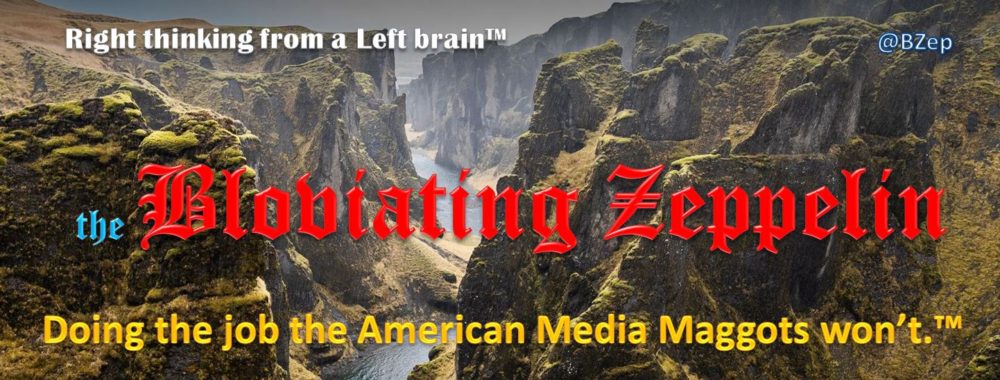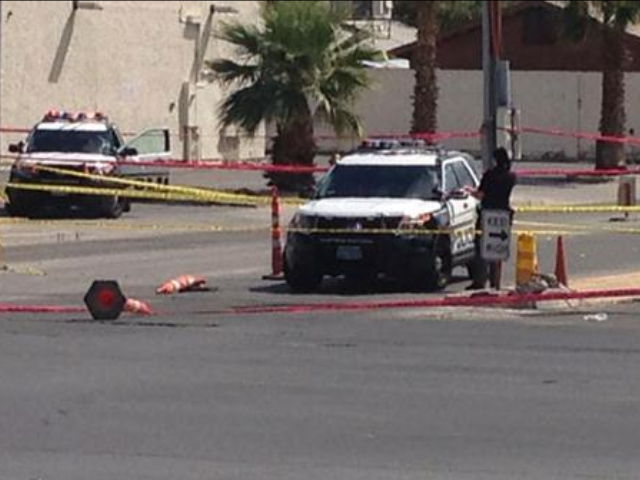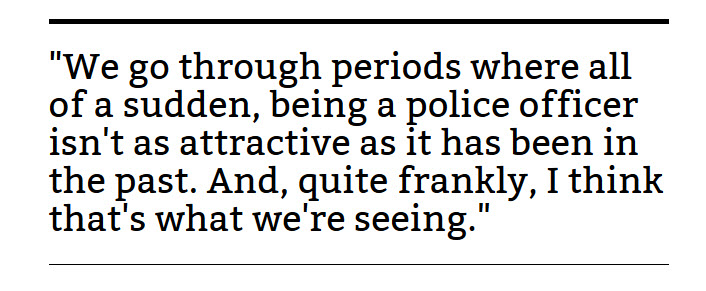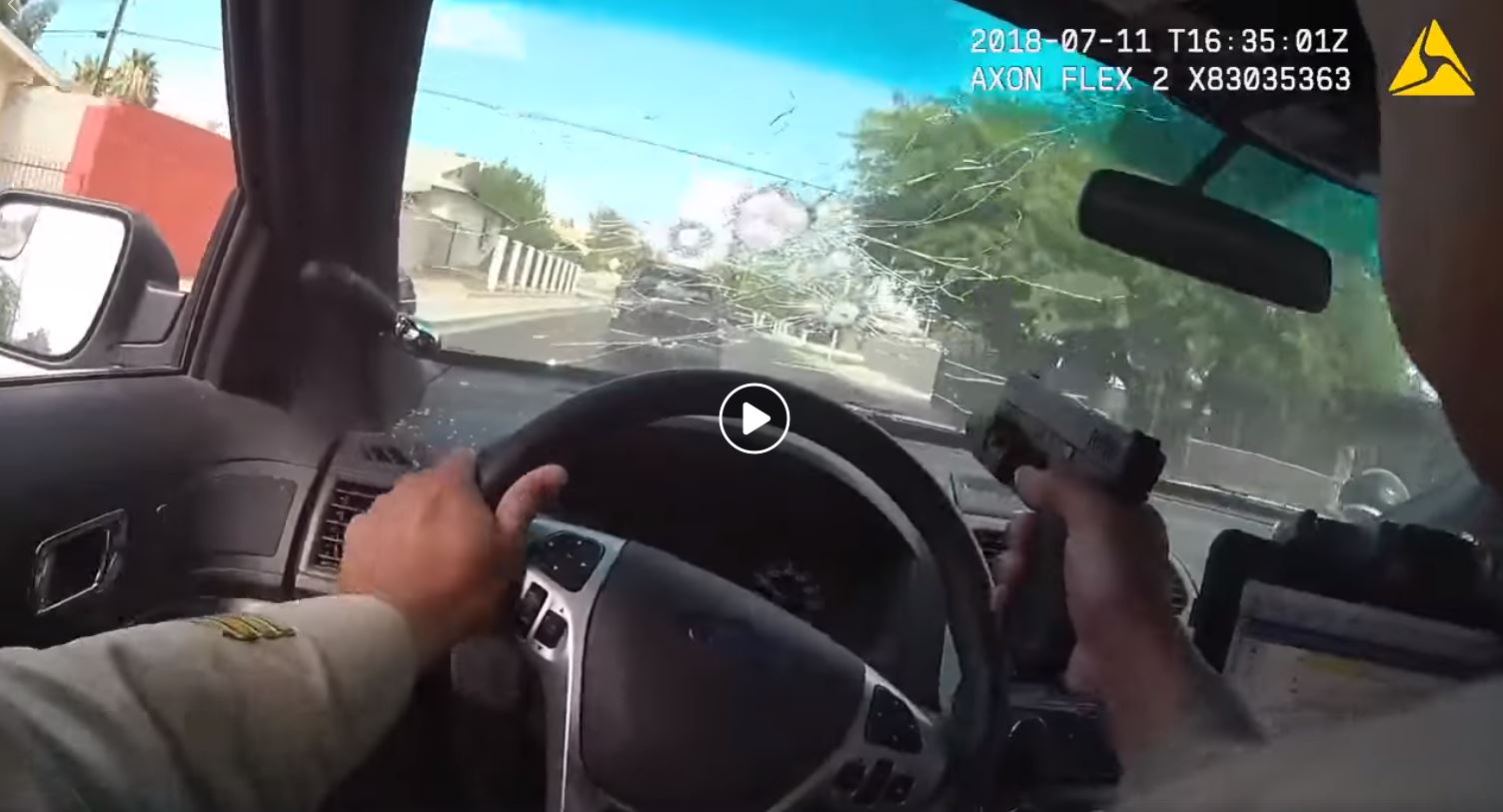 This is real world analysis from a law enforcement officer of 41 years who has worked for both federal and local LE agencies and, additionally, served as an EVOC instructor for 25+ years, an EVOC Sergeant, and as Rangemaster for a 2,000+ officer department.
This is real world analysis from a law enforcement officer of 41 years who has worked for both federal and local LE agencies and, additionally, served as an EVOC instructor for 25+ years, an EVOC Sergeant, and as Rangemaster for a 2,000+ officer department.
Was it such a great video?
First, the story from KMPH.com:
BODY CAM: Officer returns fire at murder suspects during intense pursuit
Monday, July 16th 2018
LAS VEGAS (KSNV) — Body Cam footage released by the Las Vegas Metropolitan Police Department shows an intense pursuit seen from the front seat of a Metro patrol car.
For roughly four minutes Officer William Umana was trying to stop a pair of suspected killers: Fidel Miranda and Rene Nunez.
During the chase, the pair fired at police 34 times. Umana is seen on camera shooting back while driving, blowing holes in his own windshield.
The pursuit eventually ends at Howard Hollingsworth Elementary School near Bruce & Fremont, where the suspects crashed their vehicle.
Miranda, police say, tried to reverse towards officers before he was shot and killed.
Nunez, meanwhile, ran away and tried to hide on school grounds.
He was caught and arrested.
“When you look at that video you get a clear picture of what officers were dealing with,” said Assistant Sheriff Tim Kelly. “In my opinion they showed bravery and heroics we come to expect from our officers.”
No doubt the stakes were high.
Police Miranda and Nunez were well-armed and suspected in a homicide from just two hours prior to the pursuit. They had reportedly shot and killed a man at a car wash at Eastern and Searles.
According to Sheriff Kelly, LVMPD policy allows officers to pursue and even fire at fleeing suspects if there is imminent danger to others.
“The officer could have backed off but he didn’t,” Sheriff Kelly said. “He stuck with it knowing what he was dealing with.”
Let’s check the video itself. And let’s consult the video in future reference.
In any pursuit event the adrenaline is running high. In a pursuit where officers realize the criticality is even higher due to the nature of the suspects involved — that is to say, they were believed to have been responsible for a murder two hours prior — things are ratcheted up perhaps geometrically.
That said, shooting through the window of one’s own unit is, at best, unreliable in these conditions and, at worst, potentially conducive to the exact results an officer doesn’t want. We’ll get into that.
First and foremost, there are two elements of any pursuit that must be considered:
- Officer safety, and
- Citizen safety
I place officer safety in the first position because, if officers are not safe or become injured they cannot readily carry out their mission of citizen safety. As I would tell my trainees when in Patrol as an FTO (Field Training Officer), the Hierarchy of Survival in a LE vehicle is this:
- LE Driver (if the driver isn’t safe the passenger and all others cannot be safe)
- LE Passenger (whose job it is to ably support the driver)
- Civilians
- Suspects
Civilians are in the third position because of reality. You can see my reasoning above. This conflicts with others who haven’t considered the reality of a law enforcement paradigm. Or what I used to call the “dynamics of the cockpit.”
Let’s examine the video.
Officer Umana first considers firing, left-handed, out the window as he is driving. This is his weak hand.
He subsequently fires five rounds right handed, through the windshield, in front of his face. Then six rounds two-handed, both hands off the steering wheel at high speed on a residential street. With no clear idea of his backstop.
Time for some scrutiny.
The first and primary complication involves Officer Umana firing through the windshield. This becomes a self-created problem of the senses. The first is auditory. Though it would appear that the firearm of choice in this vehicle is the Glock 17 in 9 mm, capping off a series of rounds within the confines of a Ford Explorer cockpit — though the window has been rolled down in possible anticipation of firing left-handed through it — is problematic at best. Even standing on an open range within a few feet of an individual firing a 9 mm handgun can be deafening with ear ringing occurring immediately.
Firing a 9 mm within such a limited space is also problematic because, of course, no officer carries earplugs nor can they anticipate when to insert them, if even they possessed them. Further, in terms of auditory issues, rolling down the left window also exposes the officer to the heightened sound of the siren — an issue unto itself: so-called “siren psychosis.” This was eliminated to a degree by removing sirens from the roofs of units and placing them on the front grill assembly years ago. There are also siren kill switches when vehicles are placed into PARK at the terminal point of pursuits, something police vehicle upfitters simply do now and officers don’t have to worry about. Still, during pursuits officers are trained to roll up all windows and turn up the radio.
But firing a handgun inside a tightly confined space like a vehicle is an auditory issue.
Then there is the visual issue. Fracturing the windshield directly within the line of sight to the vehicle ahead belonging to two murder suspects is problematic in terms of a clear and unimpeded view of some very bad guys. And your driving. And your analysis of surrounding conditions.
There is also the issue of potential interior glass spray or dust clouding the eyes. Windshields these days are of the safety variety and retain coherent laminated plastic layers to eliminate shard scattering. That said, it’s one serious chance taken. Let’s be honest. You can see glass fragments on his dash. With an open driver’s window and traveling at speed, all the fragments didn’t just settle calmly to the dash.
Though the officer is right-handed, he considers firing outside the rolled-down window with his left hand, then discards the idea.
He is starting to task-shed. That is to say, with time and stress, officers — and anyone else in a similar situation — tend to lose minor and detailed motor skills for major muscle groups. The brain tends to go a bit lizard.
You have to ask: what is the purpose for the shots fired through the windshield? In the mind of the officer, there is no other remedy to counteract the shots fired upon him. That’s the only conclusion I can draw, obviously not having spoken to Officer Umana.
The serious problem stemming from firing through any diagonal plane — a Ford Explorer windshield in this case — is the placement of any object between a fired bullet and its destination. The issue is that of deflection and accuracy. The issue is the windshield.
Let’s state the obvious: a .308 rifle round fired at a windshield (or through a windshield from the interior) will penetrate much more readily than a 9 mm round. In reverse, bullets fired towards vehicle windshields frequently skip because of the angle of the windshield vs the round trajectory (and distance or the loss of some energy) unless you’re talking about cars of the 1940s and 1950s. This video will illustrate reality.
The “sparks” you see in front of the police driver are rounds striking the safety glass of the windshield. Even in the 1980s and 1990s I was witness to skipping bullets fired at law enforcement vehicles by suspects.
Placing any object between a 9mm round and its intended target will have a deleterious effect upon accuracy. A slanted windshield will be placed into the “that’s not so good” category no matter the angle or directionality.
In the below video a professional trainer, Kyle Lamb (who does this for a living), shoots a S&W M&P Shield in 9 mm through a windshield towards a target to his right at a distance of about 10′ or so, from the driver’s seat.
Even in these quite contained, close and static circumstances the rounds do not hit where Lamb aims. That is because an object has come into the path of the bullets.
With four hash marks on his left arm, Officer Umana is potentially a 20-year veteran of LVMPD. (In my department each stripe indicated five years. When I retired, I had eight stripes. In some departments one hash mark equals three years.) This denotes what should be a good range of experience. I make this distinction between himself and a rookie officer in terms training, education and experience.
Here we see a situation where a suspect’s rounds deflect from the sufficiently-slanted windshield of a law enforcement vehicle — much to the benefit of the following officer.
The officer lucked out in terms of an SUV’s rear window vs, perhaps, another late year model sedan with a canted rear windshield.
This is now an appropriate time to talk about what cops call “background” or “backstop.” That is to say, what is it that rests beyond the flight path of the rounds fired? Law enforcement officers are trained to take into account their backstops — which should be taken into consideration when examining shoot/don’t shoot situations.
For example, when Officer Umana fired his first volley of rounds through his windshield, he passed a moving U-Haul truck on the left. When you see a moving U-Haul truck you know there are persons inside. This is in a residential area with much narrower streets where you can rest assured adults and children are going to be outside. That’s your backstop.
The officer approaches closely to the vehicle on its right. He fires seven rounds out the open window to his left.
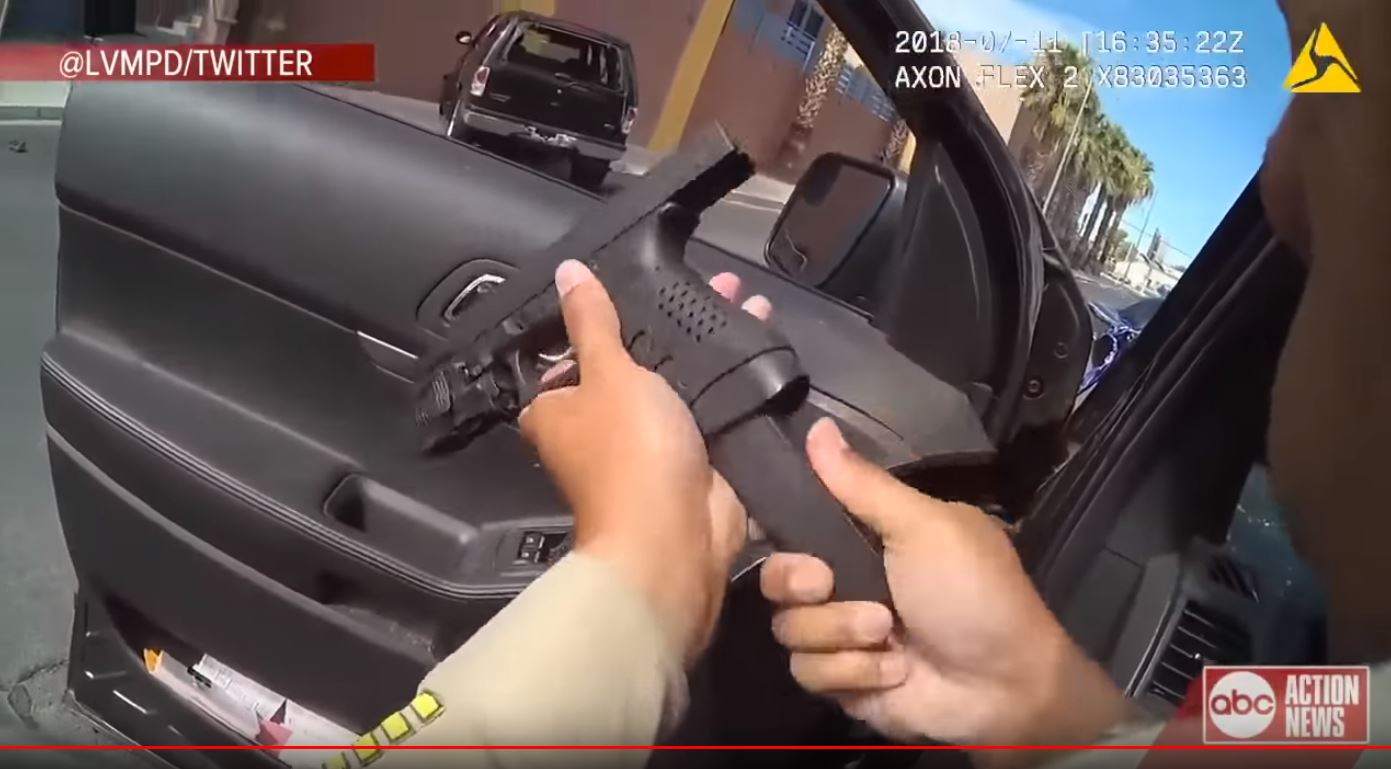 His slide locked back empty after eighteen rounds, 17 in the magazine and 1 chambered. Some task shedding is in effect. He attempts to insert a new magazine backwards. Luckily he is not under fire. He realizes his mistake and re-orients the magazine. This is a training issue and can also be an issue of the placement of magazine pouch directionality on his Sam Browne. Horizontal, vertical, inside snap or outside snap.
His slide locked back empty after eighteen rounds, 17 in the magazine and 1 chambered. Some task shedding is in effect. He attempts to insert a new magazine backwards. Luckily he is not under fire. He realizes his mistake and re-orients the magazine. This is a training issue and can also be an issue of the placement of magazine pouch directionality on his Sam Browne. Horizontal, vertical, inside snap or outside snap.
Officer Umana racks his slide instead of dropping the slide as he was initially trained. But kudos to him for getting back in gear. It’s a minor quibble but indicative of stress.
At the pursuit terminus, the officer unleashes thirteen rounds, then one more, making it fourteen rounds. That’s a total of thirty-two rounds fired during his pursuit.
The video ends.
Officer Umana performed under duress. I’ve been there. I’ve been shot at numerous times and, once, returned fire. I’ve written about this previously some years ago because I lived to tell about it.
At first blush, a great ending. Taken in consideration, some issues in question.
I make this post not to berate or shame the officer in the video. I make this post to point out one incredibly important thing: law enforcement must learn from its mistakes. If we fail to learn from our mistakes we do the profession no good or those we strive to serve.
I don’t want the conduct observed in the video to become anything like common practice in law enforcement. I have delineated, in detail, my reasoning for this. I make these comments not as some uninvolved third party who simply thinks the video “looks cool.” I make these observations as an SME in both affected areas with the requisite training, education and experience to do so.
Let me stop for a moment and mention the scenario where an officer’s vehicle is static or disabled and an armed suspect — the threat — approaches from the front, perhaps even firing during approach. Under that situation you’ll do whatever you can, perhaps firing through the windshield. That’s a different event requiring different tactics and is a much more dire situation than Officer Umana faced if for no other reasons than those of distance, closure rate and lack of officer mobility or escape routes, cover or concealment.
Yes, there is no doubt that Officer William Umana was brave and resilient. Granted. Particularly in light of the fact that these were murder suspects and that they had been firing weapons back at his vehicle.
The driver of the suspect vehicle was shot and killed. The second suspect was subsequently caught. The situation was such that, at this point, I am unaware of any secondary issues with other persons injured during the pursuit or its aftermath.
Both luck and God were smiling down on the involved officers that day. Police 2, Bad Guys 0. As well it should be.
Perhaps you’re thinking I’m too harsh by submitting that Officer Umana’s decision to fire through his windshield under these circumstances wasn’t a good idea.
We take the wins where we can. But I state unequivocally that we shouldn’t make this a standard response.
I’m sure you can imagine a different reactive scenario had an uninvolved citizen been wounded or killed as a result of the pursuit.
Law enforcement doesn’t operate in a vacuum nor can it. As with any other profession there can be trends and patterns.
I’d submit this: more LE agencies need to consider what is called “Left Of Bang.”
World class athletes do it.
Considering the stakes, cops should be taught to do it also.
Finally: Officer Umana won. He utilized the tools and resources he believed he needed at the time he needed them.
I cannot, fundamentally, fault success. God bless him.
Warning to law enforcement: be careful.
Remember Gordon Graham.
BZ
